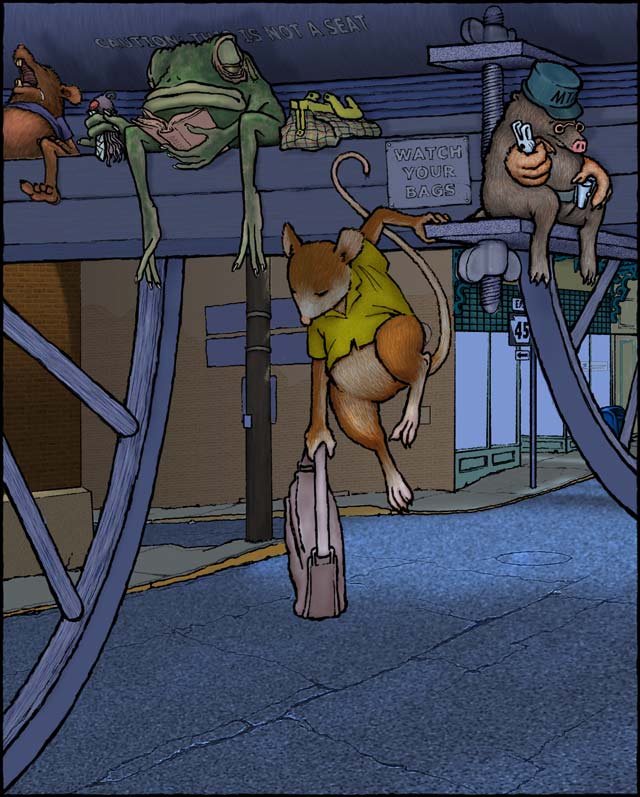My books are packed in boxes, so I have no easy access to Malraux’s Voices of Silence; I’m left to my own speculation. So when, and maybe more importantly why, did early man start to make marks? Shamanism is important, and the cave paintings in Europe are clear milestones, but before that, someone discovered they could make marks. Was it the personal sense of making that pushed them on or was there a witness and reaction to the mark or the act of marking that somehow made us do it more? Whoever painted the beasts at Lascaux must have come from a tradition of craft. Was there a need among early hunters to record, to worship, or to build teams? Were paintings a purposefully developed solution? Or did a vision and skill exist that was called into use as an application arose?
I guess what I’m really looking for is a handle on understanding my own mark making. What ever that has developed in my behavior patterns has its roots in something that feels primal. Dragging a soft pencil across a piece of clean toothsome paper feels good. Building tones and controlling the line satisfies something in me. Experimenting is fulfilling whether the act brings about a desired result or not. If someone sees the result, everything changes. If they watch the act, it causes other changes. If there’s a performance or a communication, there’s outside expectation to be addressed. That’s fine, and sometime necessary. But what about my primal intent?
What if it came about as an early way to refocus the consciousness outside of the self? I disappear when I draw. There’s a definite flow; a fugue state. I’ve read artists who call painting a religion; others claim it’s a deeply spiritual activity. They’re the words we have now. Before we had religion, could making marks have been early man’s first meditation? The first attempts to touch something larger?
I think I need to dig out that Malraux. And go out in the woods and make some marks. Clearly, working for anyone other than me would be wrong for now.

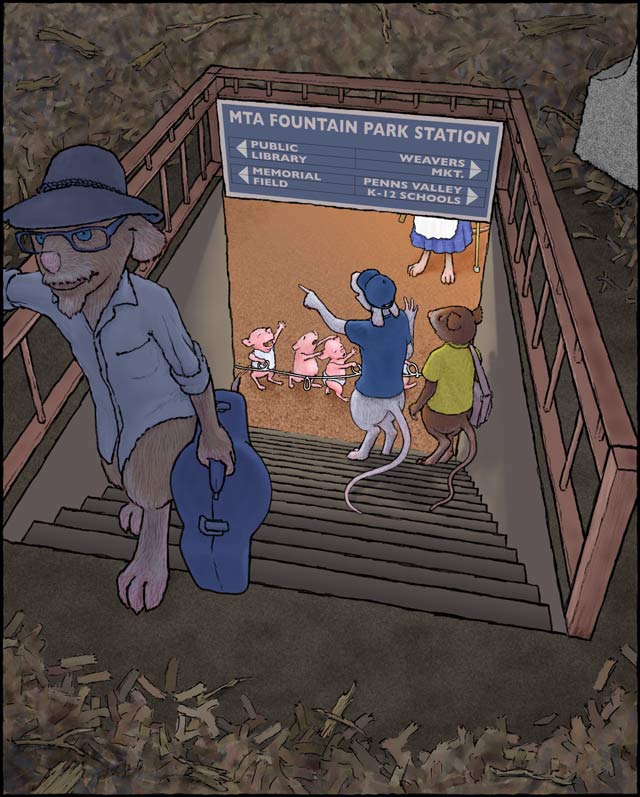

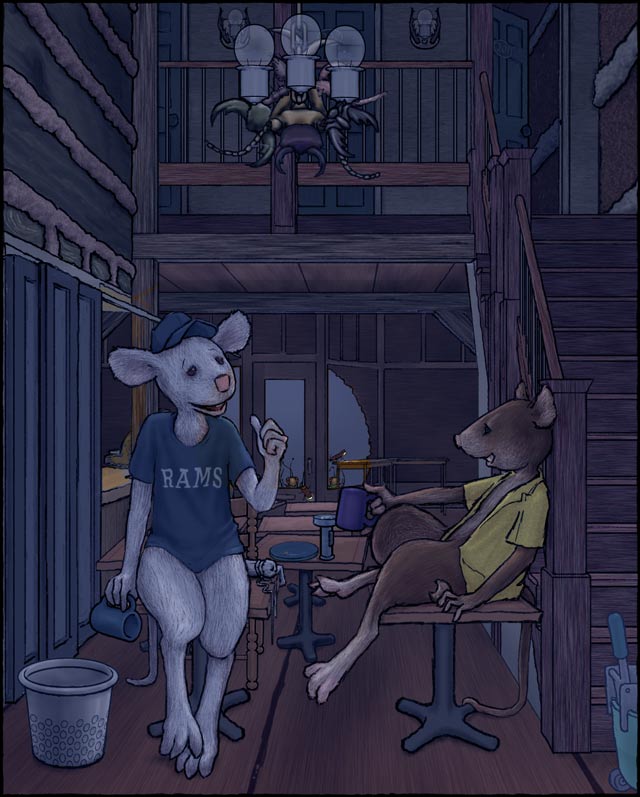
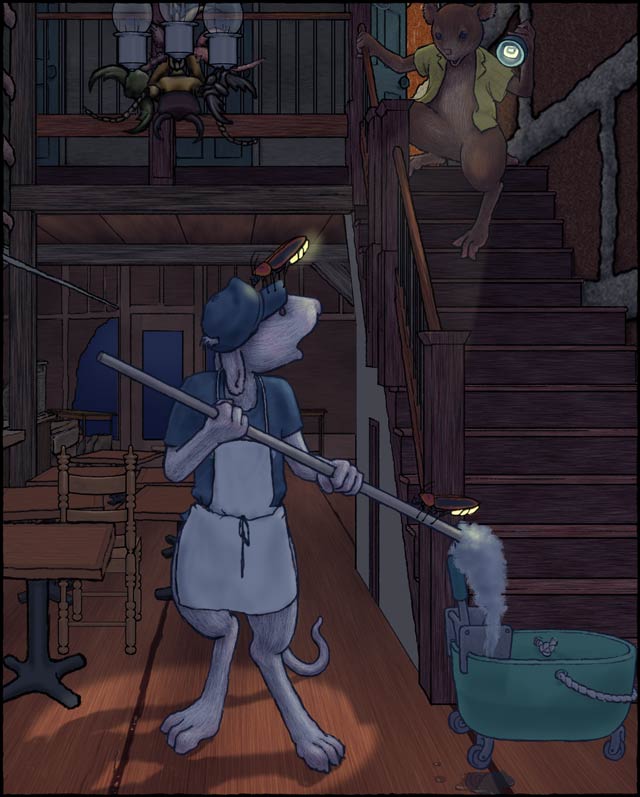
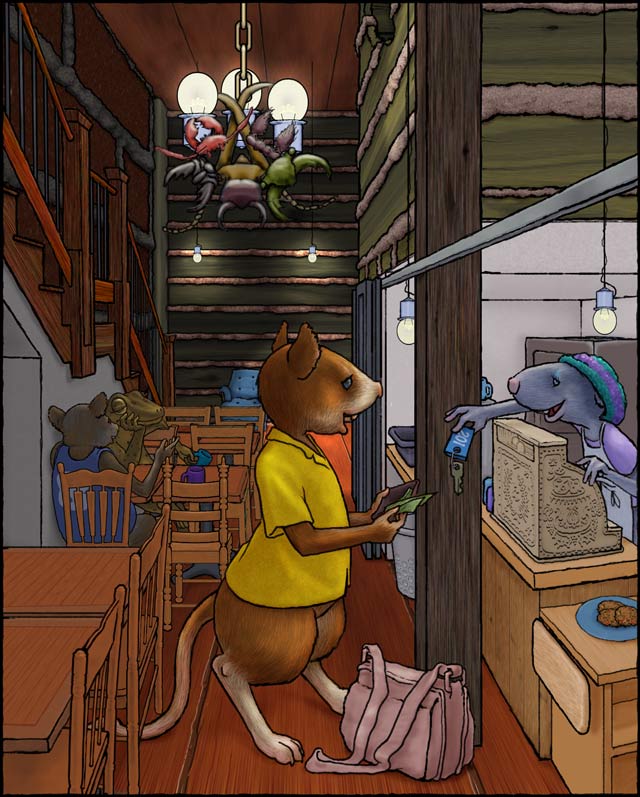
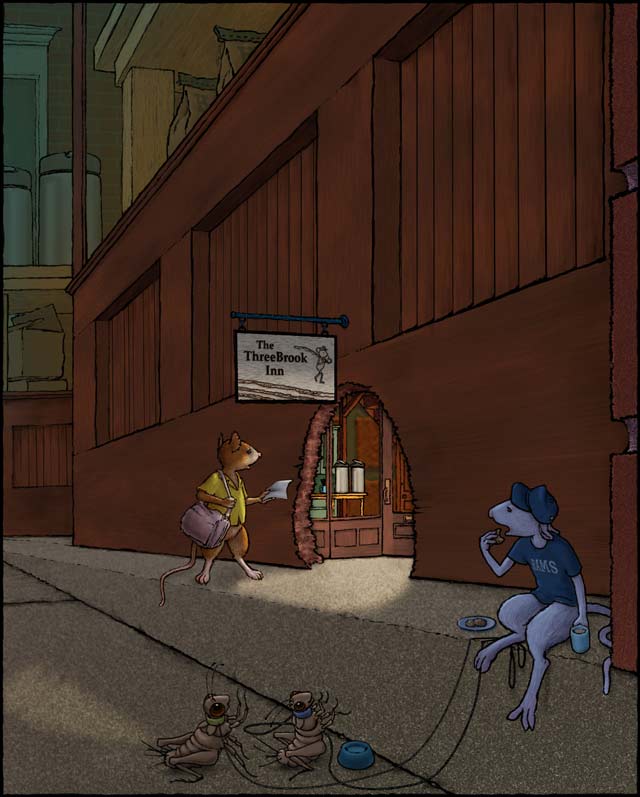
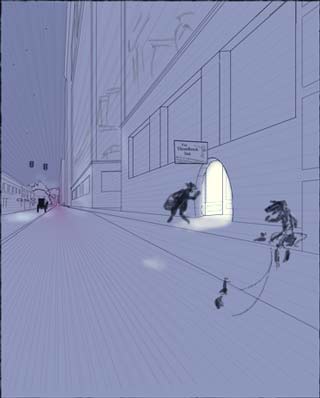 So, I may regret that. The broad shot, even in a vertical lay out, is good for placing things and setting the stage. The final view has the advantage of its open-ended-ness, certainly, but lets me push in closer to the actors. I’ll get some broad shots in later.
So, I may regret that. The broad shot, even in a vertical lay out, is good for placing things and setting the stage. The final view has the advantage of its open-ended-ness, certainly, but lets me push in closer to the actors. I’ll get some broad shots in later.